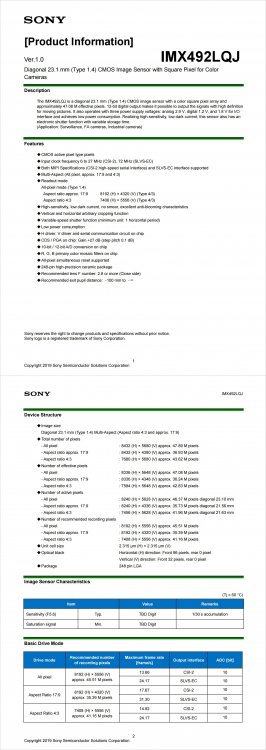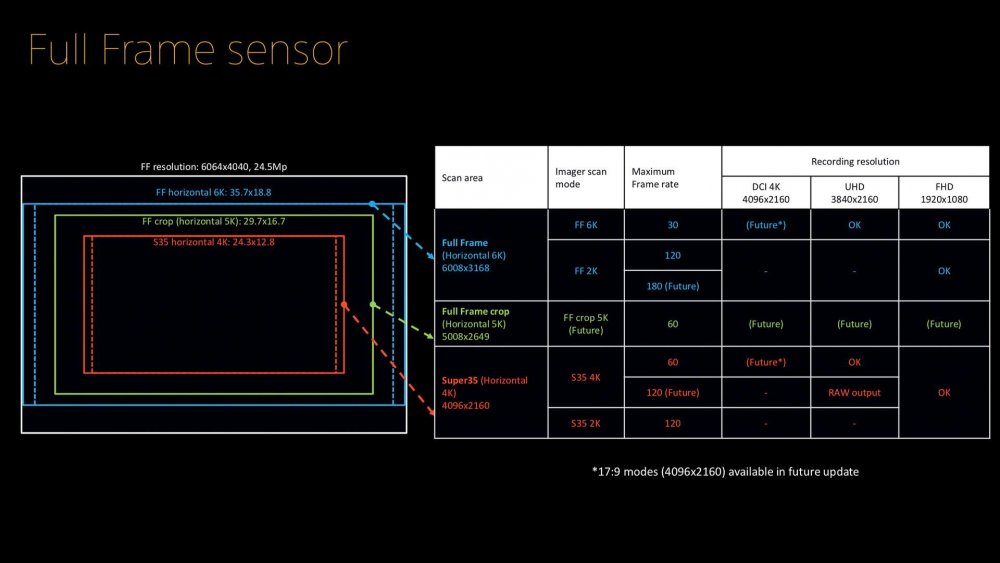
androidlad
Members-
Posts
1,215 -
Joined
-
Last visited
Content Type
Profiles
Forums
Articles
Everything posted by androidlad
-
The new Classic Negative film simulation will come to X-T3, X-T30 and GFX100 via firmware updates later this year.
-
LUMIX s1 - WIRD JIDDER in vertical lines (not moire)
androidlad replied to Lukas Kalinowski's topic in Cameras
4K <30p is. 4K 60p is 1:1 readout. 1080p is not oversampled but pixel-binned and line-skipped. Period -
LUMIX s1 - WIRD JIDDER in vertical lines (not moire)
androidlad replied to Lukas Kalinowski's topic in Cameras
You need to test it with pin-sharp and consistent focus and smaller aperture, some of the shots are clearly out of focus. View them in full screen and full quality Use the DPReview video stills comparison tool: https://***URL removed***/reviews/panasonic-lumix-dc-s1-review/8 You can see moire and aliasing in every resolution, framerate and crop mode, with 4K FF <30P being the least noticeable, and 1080p modes being the most noticeable. S1 doesn't have an OLPF so it's prone to this. -
LUMIX s1 - WIRD JIDDER in vertical lines (not moire)
androidlad replied to Lukas Kalinowski's topic in Cameras
You can run a Fast Fourier Transform using Matlab with a high detail test scene to determine the actual sampled resolution. On IMX410, it's usually horizontal binning and vertical line-skipping. IMX5XX added pixel-weighted binning which improved quality a little bit. To save R&D effort and cost, they usually use preset readout drive modes. -
If you search this forum, this questions has been answered a few times. The abrupt exposure shifts are due to aperture changes designed to facilitate movement of lens elements during zooming.
-
LUMIX s1 - WIRD JIDDER in vertical lines (not moire)
androidlad replied to Lukas Kalinowski's topic in Cameras
You left out a key piece of info - they were shot in 1080p60. Non-crop 1080p on all DSLR/mirrorless cameras is derived from pixel-binning, or line-skipping or a combination of both. The artifacts you are seeing is moire and aliasing as a result from pixel-binning and line-skipping, this is very common and completely normal, it's particularly severe on S1 due to the lack of an OLPF. -
There's 100Mbps with HEVC for 4K and 2.7K on the Hero 8.
-
More of an incremental update, some interesting accessories though.
-
There's a review here with some sample footage:
-
Competition is already here: https://***URL removed***/news/6887022560/yuneec-announces-typhoon-h3-drone-co-engineered-with-leica
-
-
There will be a separate announcement for the firmware updates in more detail.
-
Fujifilm X Summit live streaming now: Lots of good news.
-
Solution is to dump Premiere CC.
-
It's been discussed a few times before. The HLG flag in ProRes file automatically triggers Premiere Pro CC to apply an HDR to SDR conversion.
-
DJI has released a control cable for Ronin SC that allows the gimbal to trigger video record and autofocus on compatible Fujifilm cameras: https://store.dji.com/product/ronin-sc-rss-control-cable-for-fujifilm
-
Good DR and highlight roll off, but the saturation roll off is the biggest giveaway of the video look (grass/leaves outside the window in sunlight remains intense green).
-
New firmware announcement on 20th September during Fujifilm X Summit in Shibuya, Tokyo.
-
https://www.fujifilm.com/news/n190912_01.html Notable features: New 24MP Bayer sensor, IMX271: https://www.sony-semicon.co.jp/products_en/IS/sensor2/img/products/IMX271AQR_Flyer.pdf 4K 30P supersampled from 6K. 3.5" 1280 x 720 1000nit fully articulated touch screen. Full sensor high speed phase-detection AF, faster and more precise than X-T3/X-T30! There will be firmware updates for X-T3/X-T30 to further refine their AF algorithm, among other features and fixes.
-
There will be a major feature update to follow, be patient ?
-
-
You are talking about encoding bitdepth, 8bit H.264, 10bit ProRes etc. Sensor ADC readout precision dictates the upper limit of the total DR the sensor can output. Do you know what ADC is? It's absolutely linear. 12bit ADC theoretically offers 12 stops maximum DR, and BMPC6K does 11.8 in lab test. 10bit ADC = max 10 stops, as demonstrated by the noisy shadows in ZCAM E2 4K 120p footage. Alexa uses dual 14bit ADCs, it's one of the reasons why it's capable of 14 stops of DR (then stored logarithmically in 10bit ProRes) Most stills cameras use 14bit ADC for stills and that's why A7 III achieves 13.9 stops DR in stills mode. Of course the raw stream can be denoised to extend the DR below neutral grey, but in its raw state, ADC precision dictates the max DR a sensor is capable of.




